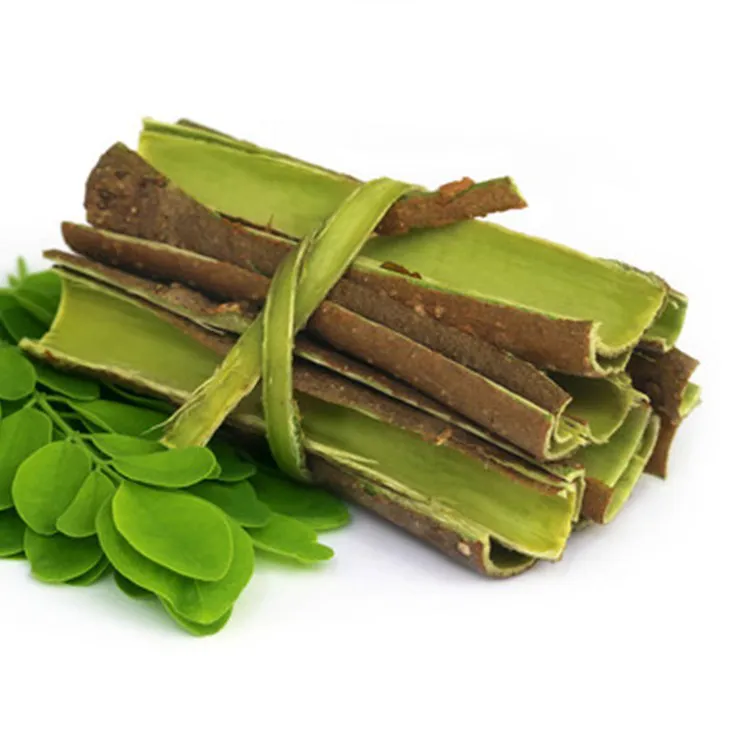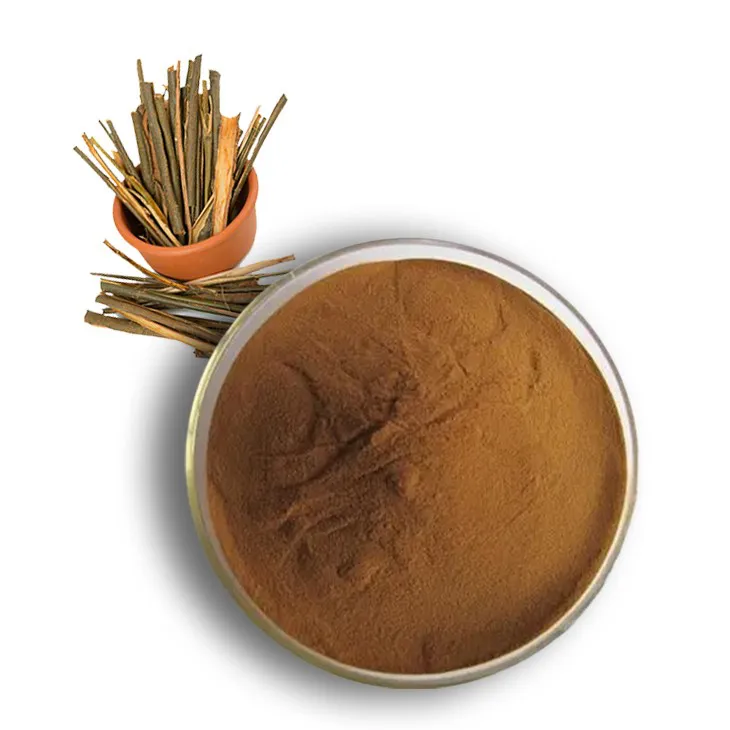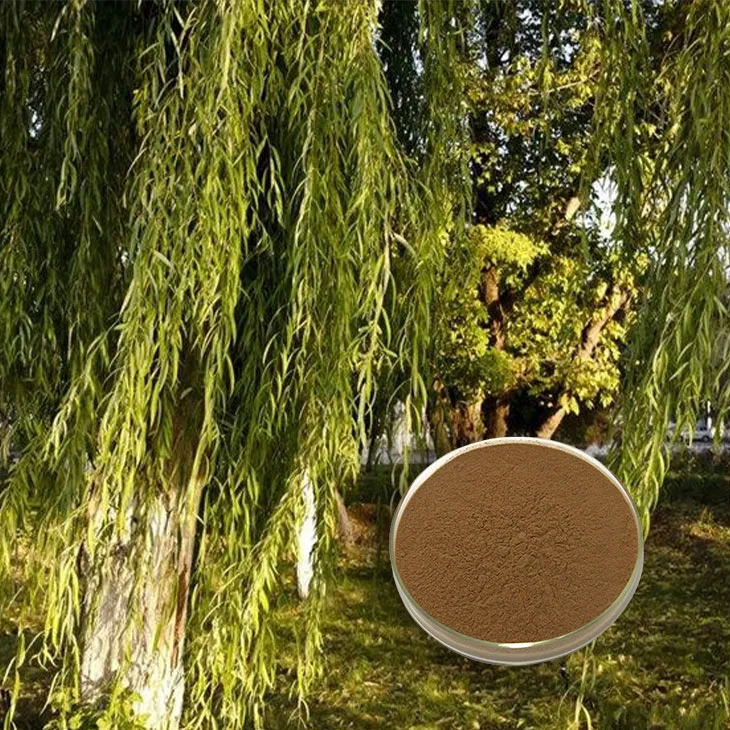- 0086-571-85302990
- sales@greenskybio.com
The Magic of White Willow Bark Extract Powder: A Comprehensive Guide
2024-11-13

1. Introduction
White Willow Bark Extract powder has been gaining increasing attention in recent years due to its various potential benefits. It is a natural product that has been used for centuries in traditional medicine. This powder is derived from the bark of the white willow tree (Salix alba), which is native to Europe and Asia. The magic of this extract powder lies in its rich composition of bioactive compounds, which contribute to its diverse range of applications.

2. Origin of White Willow
The white willow tree has a long history. It has been growing in Europe and Asia for thousands of years. In ancient times, people noticed the unique properties of the white willow bark. For example, the bark was used by Hippocrates, the "father of medicine," in ancient Greece. He recommended chewing the bark to relieve pain and reduce fever. This early use shows that the white willow has been part of human medical knowledge for a very long time.
The white willow tree typically grows in wetland areas, along riverbanks, and in moist forests. It can reach a height of up to 30 meters. The tree has long, slender branches and narrow leaves. The bark of the white willow is smooth when the tree is young and becomes rough and fissured as it ages. These characteristics are not only important for its identification but also play a role in the extraction process of its active compounds.

3. Extraction Methods
3.1. Solvent Extraction
One of the most common methods for extracting White Willow Bark Extract powder is solvent extraction. In this process, a suitable solvent is used to dissolve the active compounds from the bark. Common solvents include ethanol, methanol, and water. Ethanol is often preferred as it can effectively extract the key compounds such as salicin while being relatively safe and easy to handle.
The extraction process typically involves the following steps:
- First, the white willow bark is collected and dried. It is important to ensure that the bark is of high quality and free from contaminants.
- Then, the dried bark is ground into a fine powder. This increases the surface area of the bark, allowing for better extraction.
- Next, the powdered bark is soaked in the solvent for a certain period. The temperature and time of soaking can vary depending on the specific requirements, but typically, a warm temperature and a few hours of soaking are used.
- After soaking, the mixture is filtered to separate the liquid extract from the solid residue. The liquid extract contains the dissolved active compounds.
- Finally, the solvent is removed from the liquid extract, usually through evaporation or distillation. What remains is the White Willow Bark Extract powder.
3.2. Supercritical Fluid Extraction
Supercritical fluid extraction is a more advanced method. It uses a supercritical fluid, such as carbon dioxide (CO₂), as the extraction medium. At a certain temperature and pressure, CO₂ reaches a supercritical state where it has properties of both a liquid and a gas.
The advantages of this method are:
- It is a more environmentally friendly process as CO₂ is a non - toxic and non - flammable gas.
- It can provide a more selective extraction, resulting in a purer extract with higher quality active compounds.
- The extraction process is relatively fast, and it can operate at lower temperatures, which helps to preserve the integrity of the active compounds.

4. Chemical Composition
The white willow bark extract powder contains several important chemical components. The most notable one is salicin. Salicin is a glycoside that is converted into salicylic acid in the body. Salicylic acid is closely related to aspirin, which is a well - known pain reliever and anti - inflammatory drug. In addition to salicin, the extract powder also contains flavonoids, phenolic acids, and tannins.
Flavonoids in white willow bark extract powder have antioxidant properties. They can help to neutralize free radicals in the body, which are harmful substances that can cause oxidative stress and damage cells. Phenolic acids also contribute to the antioxidant activity and may have anti - microbial properties as well. Tannins, on the other hand, have astringent properties, which can be useful in some skin - related applications.

5. Health Benefits
5.1. Pain Relief
Just like aspirin, white willow bark extract powder can be used for pain relief. The salicin in the extract is converted into salicylic acid in the body, which inhibits the production of prostaglandins. Prostaglandins are substances that are involved in the inflammatory response and pain sensation. By reducing the levels of prostaglandins, white willow bark extract powder can help to relieve various types of pain, such as headache, muscle pain, and joint pain.
5.2. Anti - Inflammatory Effects
Due to its ability to inhibit prostaglandin production, the extract powder also has anti - inflammatory effects. It can be beneficial for conditions such as arthritis, where inflammation in the joints causes pain and reduced mobility. By reducing inflammation, it can help to improve joint function and relieve pain associated with the condition.
5.3. Fever Reduction
Historically, white willow bark has been used to reduce fever. The mechanism is related to its effect on the body's thermoregulatory system. By reducing inflammation and interfering with certain chemical pathways in the body, it can help to lower the body temperature when it is elevated due to fever.
5.4. Antioxidant Activity
As mentioned earlier, the flavonoids and phenolic acids in the white willow bark extract powder have antioxidant activity. This can help to protect the body from oxidative damage caused by free radicals. Oxidative damage has been linked to various chronic diseases, such as heart disease, cancer, and neurodegenerative diseases. By consuming white willow bark extract powder, it may be possible to reduce the risk of these diseases by enhancing the body's antioxidant defenses.
6. Other Uses
6.1. Skin Care
In skin care, white willow bark extract powder can be used for several purposes. The astringent properties of tannins can help to tighten the skin and reduce pores. The antioxidant activity of the extract can also help to protect the skin from environmental damage, such as UV radiation and pollution. Additionally, its anti - inflammatory properties can be beneficial for skin conditions such as acne and eczema, as it can reduce inflammation in the skin.
6.2. Hair Care
In hair care, the extract powder may be used to promote healthy hair growth. It can help to improve blood circulation in the scalp, which is essential for delivering nutrients to the hair follicles. The antioxidant and anti - inflammatory properties can also help to keep the scalp healthy, preventing conditions such as dandruff and scalp inflammation.
7. Precautions and Side Effects
While white willow bark extract powder has many potential benefits, it is important to be aware of some precautions and possible side effects. One of the main concerns is its similarity to aspirin. People who are allergic to aspirin may also be allergic to white willow bark extract powder. Additionally, excessive use of the extract powder may cause stomach irritation, nausea, and vomiting, just like aspirin.
It is also not recommended for pregnant or breastfeeding women to use white willow bark extract powder without consulting a doctor. There is limited research on its safety in these populations, and it may pose a risk to the fetus or the nursing infant.
8. Conclusion
In conclusion, white willow bark extract powder is a truly magical ingredient with a wide range of potential uses. Its origin in the white willow tree, extraction methods, chemical composition, and various benefits make it an interesting subject for further study. However, it is crucial to use it with caution, taking into account the precautions and potential side effects. As research continues, we may discover even more about the power and potential of this unique powder in improving health and other applications.
FAQ:
What is white willow bark extract powder?
White willow bark extract powder is a substance derived from the bark of the white willow tree. It contains active compounds such as salicin, which has various properties that make it useful in different applications.
How is white willow bark extract powder made?
The extraction process typically involves collecting the bark from white willow trees. Then, through a series of steps including drying, grinding, and using solvents or other extraction techniques, the active compounds are isolated and concentrated to form the extract powder.
What are the health benefits of white willow bark extract powder?
It has anti - inflammatory properties, which can be helpful in reducing pain and swelling. It may also act as a natural analgesic, potentially relieving headaches, joint pain, and muscle soreness. Additionally, it has been studied for its potential role in reducing fever.
Can white willow bark extract powder be used in skincare?
Yes, it can. Its anti - inflammatory properties may make it beneficial for treating skin conditions such as acne, eczema, or psoriasis. It may also help in reducing redness and irritation on the skin.
Are there any side effects of using white willow bark extract powder?
While it is generally considered safe for most people when used properly, some may experience side effects such as stomach upset, nausea, or allergic reactions. It should not be used by people who are allergic to aspirin, as it contains salicin which is related to aspirin.
Related literature
- The Efficacy and Safety of White Willow Bark Extract in Pain Management"
- "White Willow Bark Extract: A Natural Source of Anti - Inflammatory Compounds"
- "Applications of White Willow Bark Extract in Cosmetics and Skincare"
- ▶ Hesperidin
- ▶ citrus bioflavonoids
- ▶ plant extract
- ▶ lycopene
- ▶ Diosmin
- ▶ Grape seed extract
- ▶ Sea buckthorn Juice Powder
- ▶ Beetroot powder
- ▶ Hops Extract
- ▶ Artichoke Extract
- ▶ Reishi mushroom extract
- ▶ Astaxanthin
- ▶ Green Tea Extract
- ▶ Curcumin Extract
- ▶ Horse Chestnut Extract
- ▶ Other Problems
- ▶ Boswellia Serrata Extract
- ▶ Resveratrol Extract
- ▶ Marigold Extract
- ▶ Grape Leaf Extract
- ▶ blog3
-
High purity olive leaf extract
2024-11-13
-
Lavender oil extraction method
2024-11-13
-
100% organic virgin sea buckthorn fruit oil
2024-11-13
-
Lotus leaf extract powder factory in China
2024-11-13
-
China aged garlic extract supplier
2024-11-13
-
Deer antler extract powder manufacturer
2024-11-13
-
Saw palmetto extract vs whole herb
2024-11-13
-
Apricot Powder
2024-11-13
-
melatonin extract
2024-11-13
-
Cactus Extract
2024-11-13
-
Elderberry Extract
2024-11-13
-
Fig Extract
2024-11-13
-
Saw Palmetto Extract
2024-11-13
-
Berberis aristata Extract
2024-11-13
-
Red Date Extract
2024-11-13
-
Green coffee bean Extract
2024-11-13
-
Dandelion Root Extract
2024-11-13





















